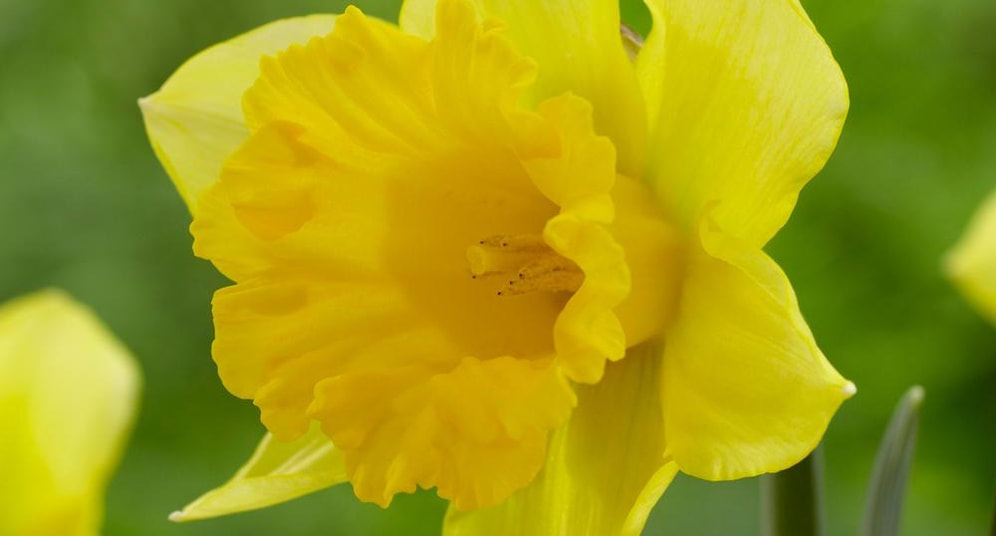|
Weather On average the temperature ranges from around 30 degrees at night to 60 degrees during the day, but it changes daily. One day it is warm and sunny; the next it is snowing. You can expect, on average, about 2 inches of snow in March. The only constant is the wind, which can blow sand in a vertical sheet. (Where you live in town will make a difference in how much wind you get). It’s a singularly frustrating month to be a gardener! The warm, mild days in February created the illusion that spring was almost here. In fact, some of the dreariest days of winter lie ahead – in March! Although the day time temperatures continue to rise, the weather is very unsettled and very windy. By March, wannabe gardeners are chomping at the bit to begin planting. Yet, wary nursery growers have only the barest of offerings on their perennial shelves. Keep that in mind next January and plant some seed flats of your own. What’s Blooming Pussy willow (Salix caprea), iris, forsythia, crocus, redbud (Cercis) and wisteria are flowering. Bulb displays include daffodils, snowdrops, Triteleia, hyacinths, and early tulips. All the fruit trees are in bloom this month: apricot (if the blooms haven’t frozen), plum, pear, peach, nectarine, apple, crabapple, cherry and quince. By the end of the month, creeping Phlox (P. subulata), Iceland poppies (Papaver nudicaule), and mid-season tulips are in bloom. Some lilacs and spirea also bloom. Xeric Blooms Winter jasmine (Jasminum nudiflorum), rosemary (Rosmarinus o cinalis), Oregon grape holly or Mahonia (Berberis aquifolium), and golden currant (Ribes aureum) are showy now. Several varieties of euphorbia, Persian rockcress, penstemons, and thymes, as well as hardy manzanita and coral honeysuckle vine. Lovely ground covers appear this month: pink soapwort (Saponaria ocymoides), Thyme “Pink Chintz,” Turkish speedwell (Veronica pectinata), “Basket of Gold” (Aurinia saxatilis), blue spurge (Euphorbia myrsinites), and mat Penstemon (P. caespitosus). Garden Activities Pansies are now available in the nurseries. They come in a beautiful range of colors, are hardy enough to survive our erratic spring weather, and provide a bright spot in the March garden. This is “furniture moving” time in the garden – that is the horticultural “furniture”. Look around. If you do not like where something is planted, this is the time to transplant it. The ground is soft enough to dig, and most plants are just starting to break dormancy so they can be safely transplanted. Why not have a perennial/biennial plant exchange party with friends or sponsor a new gardener with your plants’ offspring? Many schools like to have free plants to work with in the spring. To Do List
Watering Increase watering to 3 to 4 times a month if temperatures are consistently over 50 degrees; otherwise continue watering as in February. After heavy winds, irrigate to replace lost moisture. Be sure to keep recent transplants well watered. Pruning Finish pruning fruit trees and summer-flowering shrubs. Start pruning roses and grape vines late in the month. Prune dead blooms from Santolina, prune chamisa hard to promote new growth, and if it’s growing too large, prune the oldest stems (renewal pruning) from apache plume. Prune frost burned leaves from Mahonia and after flowering is complete, winter jasmine. Crape myrtles bloom on new growth, so frost damage can be cut away once new growth appears. Prune raspberries and other fruit bramble bushes, except for “Heritage” raspberries, which are cut back in the fall. Prune frost damaged wood from tender shrubs. Planting
Troubleshooting Larger Pests —If larger four-footed pests live in your neighborhood, such as deer and rabbits, put wire cages or wrapping around new and tender plants. Gnats —Tiny gnat-like insects are common in late winter and early spring. These pesky critters that it about your face live on the thatch in your lawn. Reducing or removing that thatch will reduce the number of gnats. Pear psylla & Peach twig borer — If you haven’t finished up using a dormant oil spray on deciduous (leafless) plants, especially fruit trees, do so now. This is especially important if diseases or insects were a problem last year. Oil treatment can be with the heavier dormant oil - winter season spray only - or with the lighter horticultural oil, which can be applied year-round. “Dormant spraying” with dormant oil must be done before the buds begin to open, otherwise the sulfur and/or other heavy material in the spray will burn the leaves or petals. Another kind of dormant spraying uses lime sulfur to burn out over-wintering diseases on woody plants; obviously this type of spray must also be done when buds are still tight. Always read label directions before applying any pesticide. Organic treatments include biological control, cultural control, and sprays of organic dormant oil, insecticidal soaps, azadirachtin, or kaolin clay. Good garden hygiene practices such as removing fallen fruits and foliage can control many damaging insects and is cheaper. Piñon needle scale. The eggs that survived your removal efforts (see February) will hatch some me in late March or early April. As soon as you determine hatch has occurred, treat the trunk and limbs with a lightweight horticultural oil, an insecticidal soap, or a botanical insecticide. Houseplants The days are getting longer and your houseplants are beginning to wake-up and grow. About mid-month begin fertilizing houseplants. If needed, repot before you begin fertilizing. If the plant’s roots are crowded and circle the pot (root bound), trim roots lightly along each side and the bottom, then spread out from the bottom like butterfly wings. In some cases, when a plant is seriously root bound or experiencing unwanted or rapid growth, you may need to re-pot it to a pot that is one size larger than the current pot. Discard the old potting mix, clean pots and disinfect them with a 10% chlorine bleach solution before reusing to remove lingering disease bacteria or fungus. This is an excerpt from the calendar published by the Albuquerque Master Gardeners. www.abqmastergardeners.org Visit their website for a schedule of classes and events!
4 Comments
3/27/2018 07:15:07 am
As a gardener, there are things to consider in taking care of plants. Being a gardener means loving and improving the plants. The flowers that was mentioned above were my favorite flowers. The blog is very helpful because it gives information. Like for the forsythia, I don’t apply a pre-emergent herbicide before but now I’ve learned that it is a necessity. I agreed that setting aside the sifted compost to work into soil where you intend to plant vegetables are very important. It must be done for the Garden. Thank you for sharing so much information!
Reply
Leave a Reply. |
Archives
March 2018
Categories |


 RSS Feed
RSS Feed